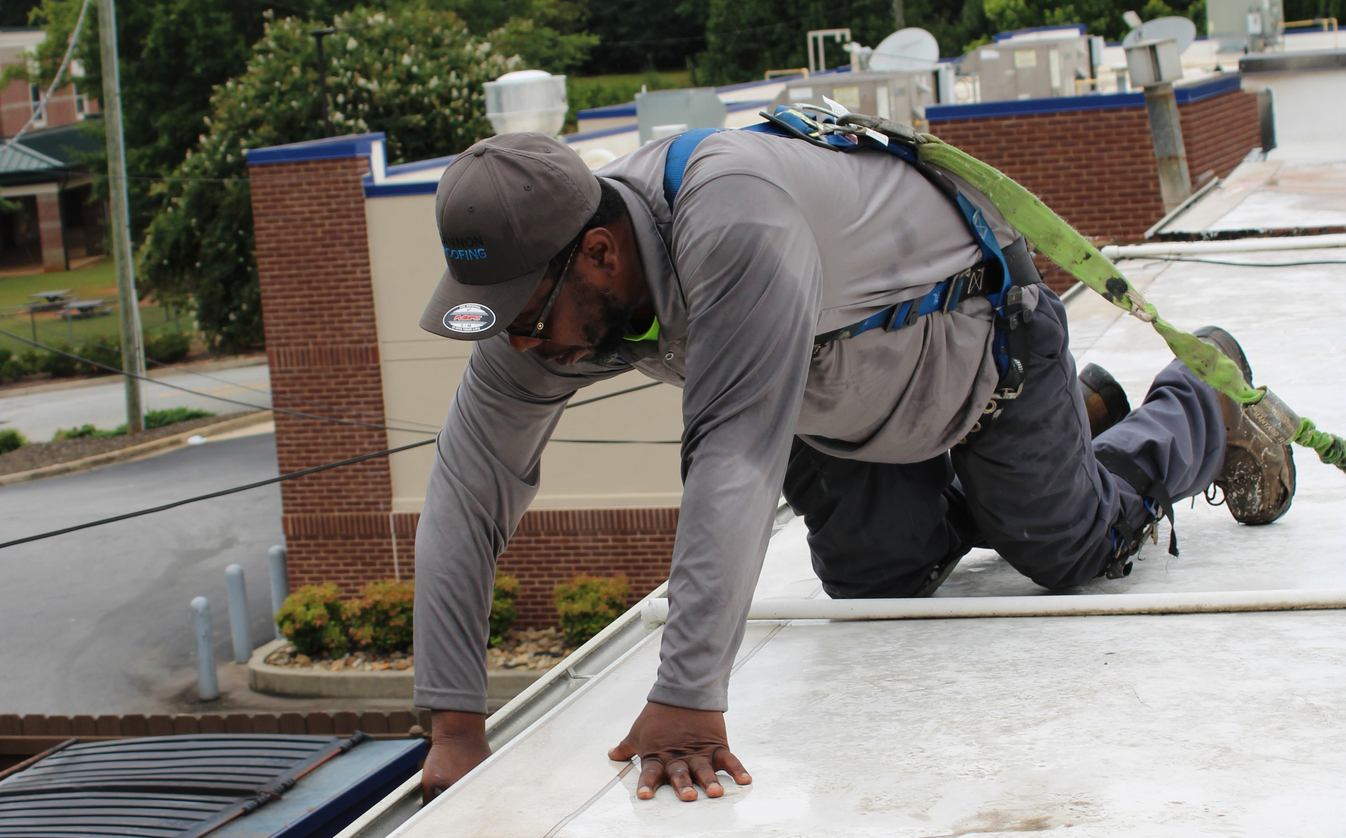Trustworthy and Budget Friendly Providers from Northeast Ohio Roofing Contractors Specialists
Trustworthy and Budget Friendly Providers from Northeast Ohio Roofing Contractors Specialists
Blog Article
A Comprehensive Guide to the Installment Refine of a Skylight Roofing
The installment of a skylight roof covering is a diverse procedure that requires thorough planning and implementation to make certain optimal efficiency and aesthetic allure. This overview will describe the important steps entailed, from choosing the proper skylight type to the important devices and materials required for an effective setup. Comprehending the nuances of structural integrity and waterproofing is critical, as these aspects directly affect the long life of your skylight. As we explore each stage, it ends up being clear that attention to detail is not simply beneficial but important for attaining a seamless integration of all-natural light right into your area.

Understanding Skylight Kinds
When taking into consideration a skylight installation, it is vital to recognize the various types readily available, each designed to accomplish different visual and practical needs. One of the most usual kinds of skylights include dealt with, vented, tubular, and operable designs.
Set skylights are non-opening systems that serve largely to supply natural light and enhance interior spaces. Skylight Installation in Cleveland Heights. They are suitable for areas where ventilation is not a problem. Vented skylights, on the other hand, include a device that enables them to open, assisting in airflow and lowering moisture degrees. These are especially valuable in kitchens or bathrooms.
Tubular skylights are small and designed to capture sunlight through a little dome on the roofing system, directing it down a reflective tube right into the home. This kind is valuable for smaller areas or spaces that require added light without endangering ceiling elevation. Lastly, operable skylights integrate both natural light and ventilation, making them flexible in different atmospheres.
Each skylight type uses special benefits, and the choice relies on variables such as the intended use of the area, neighborhood climate, and building design. Thus, recognizing these choices is vital for making an educated choice.
Planning For Installation
Choosing the suitable type of skylight is just the beginning; adequate prep work for installation is essential for making sure a successful project. Before launching the installation process, it is crucial to analyze the architectural integrity of the roof where the skylight will be mounted. This includes monitoring for any kind of indications of damages, such as rot or leaks, which may compromise the installation and lead to future problems.
Next, it is crucial to intend the location of the skylight thoroughly. Take into consideration factors such as sunshine exposure, potential blockages (like trees or neighboring structures), and the total visual appeals of the room. Noting the location clearly will aid in imagining the result and aid prevent errors during installment.
Furthermore, evaluating local building codes and obtaining essential licenses is essential to guarantee conformity with laws. This step will certainly aid prevent possible penalties and make certain the security and legitimacy of the installment.
Tools and Materials Needed
A successful skylight setup requires a specific set of tools and materials to make sure accuracy and effectiveness throughout the process. Essential devices consist of a tape action, degree, round saw, and energy blade, which are critical for exact dimensions and cutting. A drill and suitable drill little bits are required for creating openings for installing brackets, while a hammer and nails or screws are needed for protecting the skylight in position.
In addition to tools, several products are necessary for a correct installment. The skylight unit itself have to be selected based upon the dimension and type ideal for the roof. Blinking sets, which are composed of metal pieces developed to stop water leakage, are critical for guaranteeing a watertight seal. Roof concrete and caulking are likewise needed to give added waterproofing around the skylight edges.
Safety and security equipment, such as handwear covers, safety glasses, and a tough hat, need to not be forgotten to secure versus potential threats throughout the setup. article Tarpaulins or drop cloths can be useful to capture debris and safeguard the inside of the room below. Jointly, these tools and products lay the foundation for an effective skylight setup.
Step-by-Step Installment Process
Efficiently installing a skylight includes a methodical method that guarantees both functionality and aesthetics. Begin by marking the wanted location on the ceiling, guaranteeing it aligns with the structural parts of the roof covering. Next, reduced an opening that corresponds to the measurements of the skylight framework, taking care to prevent any electric circuitry or pipes.
Once the opening is prepared, install blinking around the boundary to draw away water away from the skylight. Setting the skylight try here right into the opening, guaranteeing it rests flush with the roofline.
Next, apply roof covering concrete along the edges of the skylight and around the flashing to produce a leak-proof seal. Appropriately checking the skylight makes sure sturdiness and boosts its aesthetic appeal, providing a beautiful resource of all-natural light for years to come.
Wrapping Up and Keeping Your Skylight
After the setup of your skylight is full, it's necessary to finish up the process by ensuring that all completing touches are used and correct upkeep routines are developed. Begin by checking the exterior and interior seals for any kind of spaces or inconsistencies that can lead to leaks. Correct sealing is essential for the durability of your skylight.
Next, clean the glass surface area with a mild, non-abrasive cleaner to keep quality and enhance natural light penetration. Prevent severe chemicals that can damage the frame or seals. Consistently look for particles build-up around the skylight, as this can bring about drain concerns and may require routine cleansing.
Establish an upkeep timetable, ideally every six months, to assess the problem of the skylight. Look for signs of wear, including deterioration of seals or framework materials. Resolve them without delay to stop more damage. if you observe any type of concerns.
Verdict

The installation of a skylight roof is a complex process that needs precise planning and web implementation to ensure optimum efficiency and visual allure.Selecting the appropriate type of skylight is just the start; ample preparation for setup is crucial for guaranteeing a successful job.A successful skylight setup requires a particular collection of materials and devices to guarantee precision and effectiveness throughout the process.After the setup of your skylight is total, it's vital to wrap up the process by guaranteeing that all completing touches are applied and appropriate upkeep routines are developed. Making sure structural honesty, correct flashing installation, and a watertight seal are crucial for the skylight's efficiency and durability.
Report this page